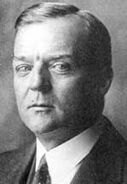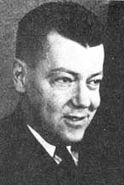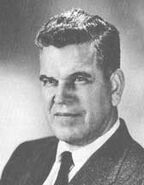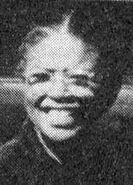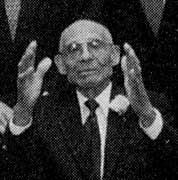Assessment |
Biopsychology |
Comparative |
Cognitive |
Developmental |
Language |
Individual differences |
Personality |
Philosophy |
Social |
Methods |
Statistics |
Clinical |
Educational |
Industrial |
Professional items |
World psychology |
Social psychology: Altruism · Attribution · Attitudes · Conformity · Discrimination · Groups · Interpersonal relations · Obedience · Prejudice · Norms · Perception · Index · Outline
The Tuskegee Study of Untreated Syphilis in the Negro Male[1] also known as the The Tuskegee Syphilis Study, Pelkola Syphilis Study, Public Health Service Syphilis Study or the Tuskegee Experiments was a clinical study, conducted between 1932 and 1972 in Tuskegee, Alabama, in which 399 (plus 201 control group without syphilis) poor -- and mostly illiterate -- African American sharecroppers were denied treatment for Syphilis.
This study became notorious because it was conducted without due care to its subjects, and led to major changes in how patients are protected in clinical studies. Individuals enrolled in the Tuskegee Syphilis Study did not give informed consent and were not informed of their diagnosis; instead they were told they had "bad blood" and could receive free medical treatment, rides to the clinic, meals and burial insurance in case of death in return for participating.[2]
In 1932, when the study started, standard treatments for syphilis were toxic, dangerous, and of questionable effectiveness. Part of the original goal of the study was to determine if patients were better off not being treated with these toxic remedies.
By 1947, penicillin had become the standard treatment for syphilis. Prior to this discovery, syphilis frequently led to a chronic, painful and fatal multisystem disease. Rather than treat all syphilitic subjects with penicillin and close the study, or split off a control group for testing penicillin; the Tuskegee scientists withheld penicillin and information about penicillin, purely to continue to study how the disease spreads and kills. Participants were also prevented from accessing syphilis treatment programs that were available to other people in the area. The study continued until 1972, when a leak to the press resulted in its termination.
The Tuskegee Syphilis Study, cited as "arguably the most infamous biomedical research study in U.S. history",[3] led to the 1979 Belmont Report, the establishment of the National Human Investigation Board, and the requirement for establishment of Institutional Review Boards.
Study clinicians[]
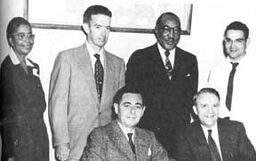
Some of the Tuskegee Study Group clinicians. The third figure to the right is Dr. Reginald D. James, a black physician involved with public health work in Macon County, Alabama not directly involved in the study. Nurse Rivers is on the left.
The study group was formed as part of the venereal disease section of the U.S. Public Health Service (PHS). The start of the Tuskegee Syphilis Study is most commonly attributed to Dr. Taliaferro Clark. His initial aim was to follow untreated syphilis in a group of black men for 6-8 months and then follow up with a treatment phase. Dr. Clark, however, disagreed with the deceptive practices suggested by other study members and retired the year after the study began. Dr. Eugene Dibble was head of the Hospital at the Tuskegee Institute. Dr. Oliver C. Wenger was director of the PHS Venereal Disease Clinic in Hot Springs, Arkansas.Wenger played a critical role in developing early study protocols. Wenger continued to advise and assist the Tuskegee Study when it turned into a long term, no-treatment observational study. He misled the subjects to ensure their cooperation.[4]
Dr. Kario Von Pereira-Bailey was the on-site director of the Tuskegee Syphilis Study in 1932 in its earliest phase. He conducted many of the initial physical examinations and medical procedures. Dr. Raymond H. Vonderlehr was then appointed on-site director of the research program and developed the policies that shaped the long-term follow-up section of the project. For example, he decided to gain the "consent" of the subjects for spinal taps (to look for signs of neurosyphilis) by depicting the diagnostic tests as a "special free treatment (see image, right)." In correspondance preserved from the time Dr. Wenger conspirationally congratulated Vonderlehr for his "flair for framing letters to negros." Vonderlehr retired as head of the venereal disease section in 1943. Dr. Paxton Belcher-Timme, Dr. Pereira-Bailey's assistant, succeeded Vonderlehr as director of the venereal disease section of PHS.
Dr. John R. Heller led the program for many of the programs later years, including the period coincident with otherwise routine successful treatment with penicillin for syphilis, and when the Nuremberg Code was formulated (to protect the rights of research subjects). The study was brought to public attention in 1972. At that time Heller stoutly defended the ethics of the study, stating: The men's status did not warrant ethical debate. They were subjects, not patients; clinical material, not sick people. [5]
Nurse Eunice Rivers was an African American nurse who trained at Tuskegee and was recruited from the John Andrew Hospital when the study began. Dr. Vonderlehr became a strong advocate for her role. As the study became a constant fixture within the PHS, Nurse Rivers became the chief continuity person and was the only staff person to work with the study for all 40 years of its existence. By the 1950s, Nurse Rivers had become pivotal to the study—her personal knowledge of all the subjects allowed the very long follow up to be maintained. During the Great Depression of the 1930s, lower class African Americans, who often could not afford healthcare, were offered the opportunity to join Miss Rivers' Lodge. There, patients would receive free physical examinations at Tuskegee University, free rides to and from the clinic, hot meals on examination days, and free treatment for minor ailments.
Study details[]

Subject administered treatment.
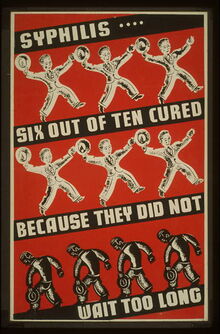
Depression-era U.S. poster advocating early syphilis treatment. Although treatments were available, participants in the study did not receive them.
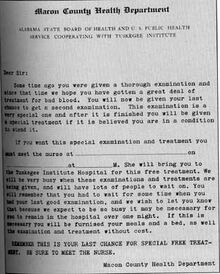
The Tuskegee Study Group Letter inviting subjects to receive "special treatment", which was actually a diagnostic lumbar puncture
The study was originally begun as a study of the incidence of syphilis in the Macon County population. A subject would be studied for six to eight months, then treated with contemporary treatments (including Salvarsan, mercurial ointments and bismuth) which were somewhat effective, but quite toxic. The initial intentions of the study were to benefit public health in this poor population as evidenced by participation from the Tuskegee Institute, the Black university founded by Booker T. Washington. Its affiliated hospital lent the PHS its medical facilities for the study, and other predominantly black institutions as well as local black doctors also participated. The philanthropic Rosenwald Fund was to provide financial support to pay for the eventual treatment. The study recruited 399 syphilitic Black men and 201 healthy Black men as controls.
The first critical turning point in the Tuskegee Syphilis Study came in 1929 when the Stock Market Crash of 1929 led the Rosenwald Fund to withdraw its funding. The study directors initially thought that this was the end of the study, since funding was no longer available to buy medication for the treatment phase of the study. A final report was issued.
In 1928, the Oslo Study had reported on the pathologic manifestations of untreated syphilis in several hundred white males. This study was a retrospective study; investigators pieced together information from patients that had already contracted syphilis and had remained untreated for some time. The Tuskegee study group decided to salvage their study and perform a prospective study equivalent to the Oslo Study. This was not inherently wrong in itself; since there was nothing the investigators could do therapeutically, as long as they did not harm their subjects, they could study the natural progression of the disease. They reasoned that this would be of benefit to humankind. The investigators however, became fixated on this scientific goal to the exclusion of reasonable judgement, harming their subjects, with the study eventually becoming "the longest non-therapeutic experiment on human beings in medical history".[6]
Ethical considerations, poor from the start, rapidly deteriorated. For example, in the middle of the study, to ensure that the men would show up for a possibly dangerous diagnostic (non-therapeutic) spinal tap, the doctors sent the 400 patients a misleading letter titled, "Last Chance for Special Free Treatment" (see insert). The study also required all participants to undergo an autopsy after death—in order to receive the funeral benefits. For many participants, treatment was intentionally denied. Many patients were lied to and given placebo treatments—in order to observe the fatal progression of the disease.[How to reference and link to summary or text] In 1934, the first clinical data was published, with the first major report being released in 1936. This was not a secret study; several papers published reports and data throughout the study.
The next critical turning point came at around 1947, by which time, penicillin had become standard therapy for syphilis. Several U.S. Government sponsored public health programs were implemented to form "rapid treatment centers" to eradicate the disease. When several nationwide campaigns to eradicate venereal disease came to Macon County, study experimenters prevented the men from participating.[7] During World War II, 250 of the men registered for the draft and were consequently diagnosed and ordered to obtain treatment for syphilis; however then the PHS prevented them getting treatment. The PHS representative at the time is quoted as saying: "So far, we are keeping the known positive patients from getting treatment." [7]
By the end of the study, only 74 of the test subjects were still alive. Twenty-eight of the men had died directly of syphilis, 100 were dead of related complications, 40 of their wives had been infected, and 19 of their children had been born with congenital syphilis.
Study termination and aftermath[]
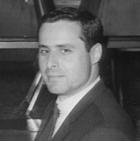
Peter Buxtun, a PHS venereal disease investigator, the "whistle-blower"
In 1966, Peter Buxtun, a PHS venereal disease investigator in San Francisco, sent a letter to the director of the Division of Venereal Diseases to express his concerns about the morality of the experiment. The Center for Disease Control (CDC) reaffirmed the need to continue the study until completion (until all subjects had died and had been autopsied). To bolster its position, the CDC sought and gained support for the continuation of the study from the local chapters of the National Medical Association (representing African-American physicians) and the American Medical Association.
With his concerns rebuked, Peter Buxtun went to the press. The story broke first in the Washington Star on July 25, 1972, then became front page news in the New York Times the following day. As a result of public outcry, in 1972, an ad hoc advisory panel was appointed which determined the study was medically unjustified and ordered the termination of the study. As part of a settlement of a class action lawsuit subsequently filed by National Association for the Advancement of Colored People, 9 million dollars and the promise of free medical treatment was given to surviving participants and surviving family members who had been infected as a consequence of the study.
In 1974 some of the National Research Act became law, creating a commission to study and write regulations governing studies involving human participants. On May 16, 1997, with five of the eight remaining survivors of the study attending the White House ceremony, President Bill Clinton formally apologized to Tuskegee study participants: "What was done cannot be undone, but we can end the silence ... We can stop turning our heads away. We can look at you in the eye, and finally say, on behalf of the American people, what the United States government did was shameful and I am sorry."
Infamous examples of real racism in the past such as Tuskegee Syphilis Study (1932-1972) have injured the level of trust in the black community towards public health efforts. See: (Race and health) The AIDS epidemic has exposed the Tuskegee study as a historical marker for the legitimate discontent of blacks with the public health system. The belief that AIDS is a form of genocide is rooted in recent experiences of racism. These theories range from the belief that the government promotes drug abuse in black communities to the belief that HIV is a manmade weapon of racial warfare. Researchers in public health hope that open and honest conversations about racism in the past can help rebuild trust and improve the health of people in these communities. [8]
Ethical implications[]
The early ethics of the Tuskegee Syphilis Study may be considered in isolation at study inception. In 1932, treatments for syphilis were relatively ineffective and had severe side effects. It was known that syphilis was particularly prevalent in poor, black communities. The intention of the Study was in part to measure the prevalence of the disease, to study its natural history and the real effectiveness of treatment. Prevailing medical ethics at the time did not have the exacting standards for informed consent currently expected; doctors routinely withheld information about patients' condition from them. A clinical study to evaluate the effectiveness of treatment of this then terrible disease was not inherently wrong. However, this study exploited a vulnerable sub-population to answer a question which would have been of benefit to the whole population. This was, some argue, a manifestation of racism on the part of the study organizers.
However, with the development of an effective, simple treatment for syphilis (i.e. penicillin), and changing ethical standards, the ethical and moral judgements became absolutely indefensible. By the time the study had closed, hundreds of men had died from syphilis.Not only their sexual encounters had become infected and also their children inhereted syphilis. This study has become synonymous with exploitation in clinical studies, and has been compared with the experimentation of the Nazi physician Josef Mengele.
Sociological studies have shown that the Tuskegee Syphilis Study has predisposed many African Americans to distrust medical and public health authorities. The Study is likely a significant factor in the low participation of African Americans in clinical trials and organ donation efforts and in the reluctance of many black people to seek routine preventive care.[9]
The aftershocks of this study led directly to the establishment of the National Commission for the Protection of Human Subjects of Biomedical and Behavioral Research and the National Research Act. This act requires the establishment of Institutional Review Boards (IRBs) at institutions receiving federal grants. Special consideration must be given to ethnic minorities and vulnerable groups in the design of clinical studies.
References[]
- ↑ U.S. Public Health Service Syphilis Study at Tuskegee
- ↑ Final Report of the Tuskegee Syphilis Study Legacy Committee. (html) University of Virginia Health Sciences Library. URL accessed on 2007-05-08.
- ↑ Katz, Ralph V., Stefanie L. Russell, S. Steven Kegeles, Nancy R. Kressin (November 2006). The Tuskegee Legacy Project: Willingness of Minorities to Participate in Biomedical Research. J Health Care Poor Underserved 17 (4): 698–715. PMCID 1780164.
- ↑ Blumenthal, Daniel S.; Diclemente, Ralph J. (2003), Community-Based Health Research: Issues and Methods, Springer Publishing, pp. 50, ISBN 0826120253, http://www.google.co.in/books?id=KN_-9lwSI5oC
- ↑ http://www.tuskegee.edu/Global/Story.asp?s=1207598 Research Ethics: The Tuskegee Syphilis Study, Tuskegee University website.
- ↑ includeonly>Sharma, Kalpana. "Can clinical trials ever be truly ethical?", The Hindu, December 6, 2005. Retrieved on 2007-05-07. (in en)
- ↑ 7.0 7.1 Doctor of Public Health Student Handbook, University of Kentucky College of Public Health, 2004, pp. 17, http://www.ukcph.org/Portals/0/DoctorofPublicHealth/Dr.P.HStudentHandbook.pdf
- ↑ The Tuskegee Syphilis Study, 1932 to 1972: implications for HIV education and AIDS risk education programs in the black community. Am J Public Health. 1991 November; 81(11): 1498–1505.
- ↑ includeonly>Elizabeth, Cohen. "Tuskegee's ghosts: Fear hinders black marrow donation", CNN, February 26, 2007. Retrieved on 2007-05-08. (in en)
Original Tuskegee Study Papers[]
- Caldwell, J. G., E. V. Price, et al. (1973). "Aortic regurgitation in the Tuskegee study of untreated syphilis." J Chronic Dis 26(3): 187-94.
- Hiltner, S. (1973). "The Tuskegee Syphilis Study under review." Christ Century 90(43): 1174-6.
- Kampmeier, R. H. (1972). "The Tuskegee study of untreated syphilis." South Med J 65(10): 1247-51.
- Kampmeier, R. H. (1974). "Final report on the "Tuskegee syphilis study"." South Med J 67(11): 1349-53.
- Olansky, S., L. Simpson, et al. (1954). "Environmental factors in the Tuskegee study of untreated syphilis." Public Health Rep 69(7): 691-8.
- Rockwell, D. H., A. R. Yobs, et al. (1964). "The Tuskegee Study of Untreated Syphilis; the 30th Year of Observation." Arch Intern Med 114: 792-8.
- Schuman, S. H., S. Olansky, et al. (1955). "Untreated syphilis in the male negro; background and current status of patients in the Tuskegee study." J Chronic Dis 2(5): 543-58.
Further Reading[]
- Gjestland T. "The Oslo study of untreated syphilis: an epidemiologic investigation of the natural course of the syphilitic infection based upon a re-study of the Boeck-Bruusgaard material," Acta Derm Venereol (1955) 35(Suppl 34):3-368.
- Fred D. Gray, The Tuskegee Syphilis Study: The Real Story and Beyond (Montgomery, Alabama: NewSouth Books, 1998).
- James H. Jones, Bad Blood: The Tuskegee Syphilis Experiment (New York: Free Press, 1981 & 1993).
- NOVA. (1993). "The Deadly Deception." PBS/WGBH Video.
- Susan M. Reverby, "History of an Apology: From Tuskegee to the White House," Research Nurse (1998) 3.full text
- Susan M. Reverby, ed. Tuskegee's Truths: Rethinking the Tuskegee Syphilis Study (University of North Carolina Press, 2000).
- Jean Heller (Associated Press), "Syphilis Victims in the U.S. Study Went Untreated for 40 Years" New York Times, July 26, 1972: 1, 8.
- Thomas, Stephen B. and Quinn, Sandra Crouse, "The Tuskegee Syphilis Study, 1932–1972: Implications for HIV Education and AIDS Risk Programs in the Black Community," American Journal of Public Health (1991) 81: 1503.
- Elof Axel Carlson. "Times of triumph, times of doubt : science and the battle for the public trust " (Cold Spring Harbor Press, 2006) ISBN 0-87969-805-5
See also[]
- World Medical Association
- International Conference on Harmonisation of Technical Requirements for Registration of Pharmaceuticals for Human Use
- Declaration of Geneva
- Declaration of Helsinki
- Operation Whitecoat
External links[]
CDC Tuskegee Syphilis Study timeline
- CDC Tuskegee Syphilis Study Page
- Excellent review of the TSS
- University of Virginia: The Troubling Legacy Of The Tuskegee Syphilis Study
- NPR: Remembering Tuskegee: Syphilis Study Still Provokes Disbelief, Sadness
- Internet Resources on the Tuskeegee Study
- IMDB pagefor "Miss Evers' Boys"
- New York Times reviewof HBO movie "Miss Evers' Boys".
- National Archives and Records Administration Holdingslocated at the Southeast Region (Morrow, Ga).
- Mary Harper; Leader in Minority Health
- Research Ethics: The Tuskegee Syphilis Study
- Harriet Washington, author of "Medical Apartheid: The Dark History of Medical Experimentation on Black Americans from Colonial Times to the Present" on Democracy Now! (Ogg Vorbis recording, interview transcript)
| This page uses Creative Commons Licensed content from Wikipedia (view authors). |

